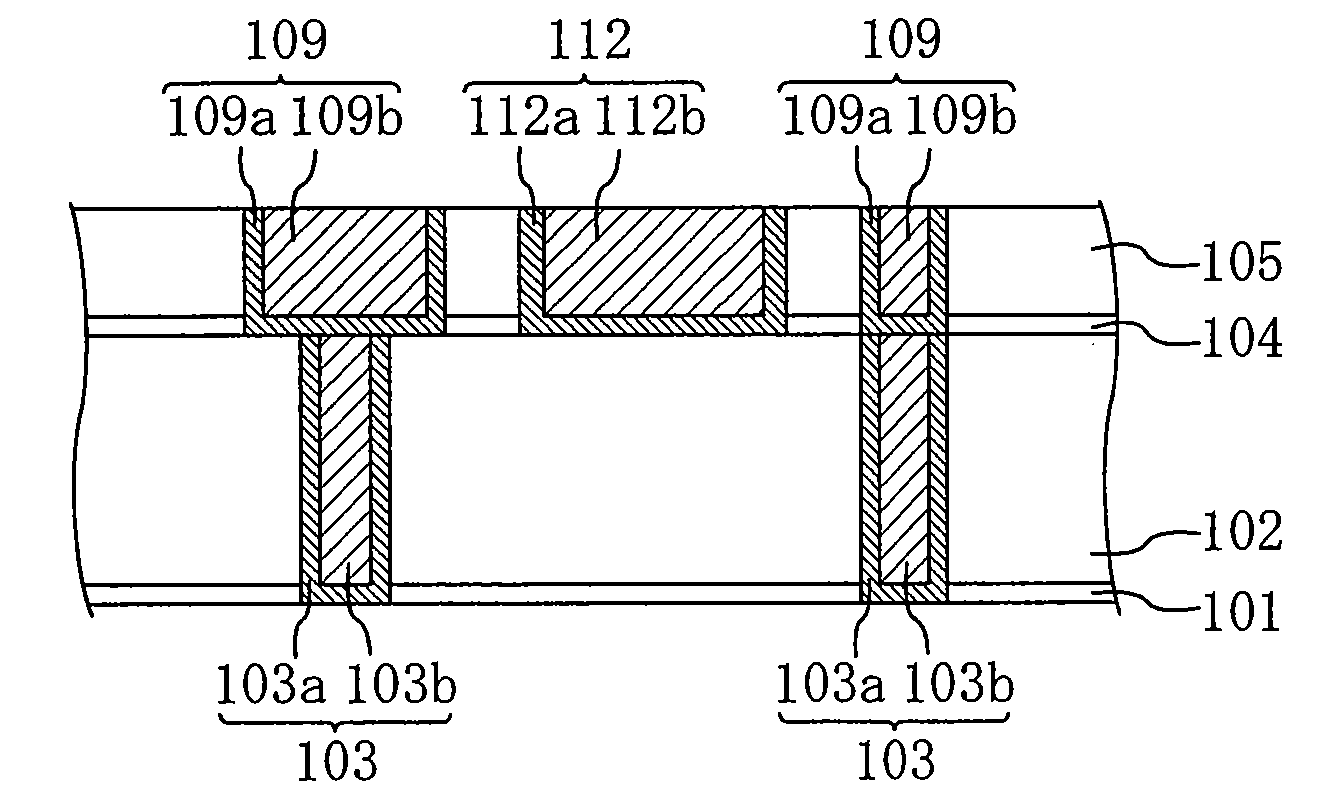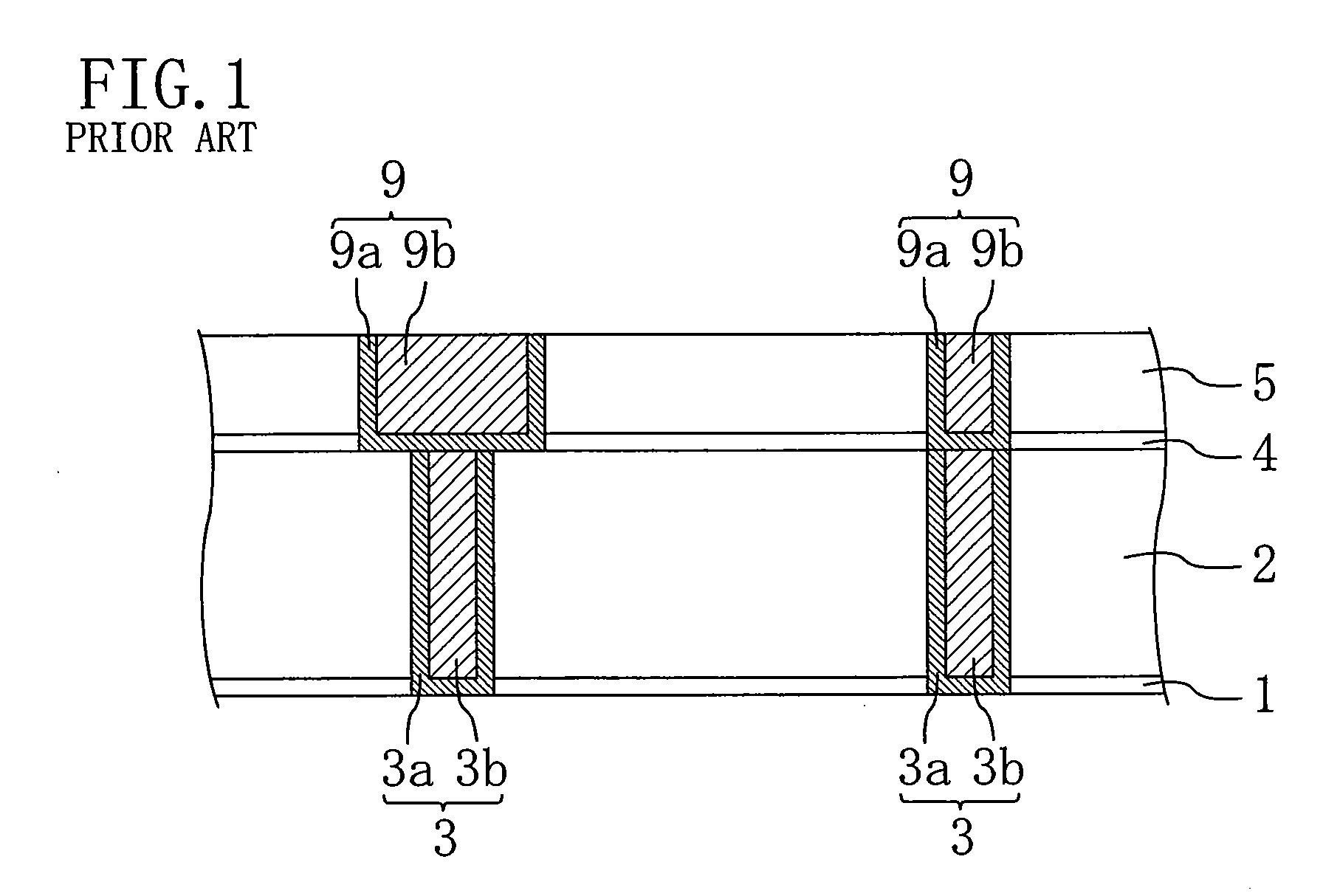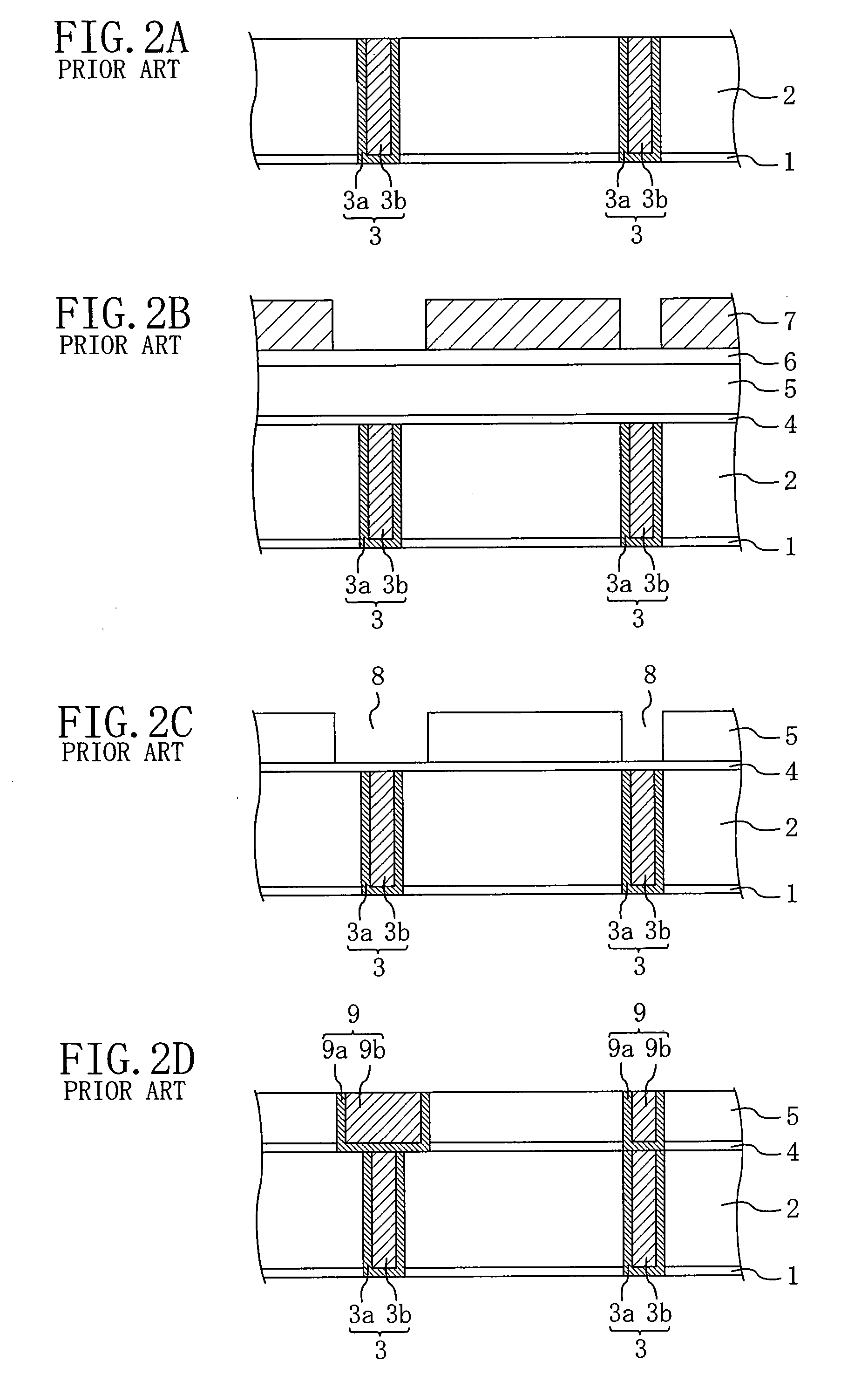Method for fabricating semiconductor device
a semiconductor and device technology, applied in the direction of semiconductor devices, semiconductor/solid-state device details, electrical equipment, etc., can solve the problems of poor adhesion to the insulating film and metals, short circuit between the contacts and between the interconnects, and reduced adhesion, so as to achieve the effect of removing water more effectively
- Summary
- Abstract
- Description
- Claims
- Application Information
AI Technical Summary
Benefits of technology
Problems solved by technology
Method used
Image
Examples
first embodiment
[0025]A method for fabricating a semiconductor device according to a first embodiment of the invention will be described with reference to FIGS. 3A to 3D.
[0026]First, as shown in FIG. 3A, contacts 103, each composed of a barrier metal film 103a and a metal film 103b, and dummy contacts 110, each composed of a barrier metal film 110a and a metal film 110b, are formed on a silicon substrate (not shown). To be specific, a first insulating film 101 is formed on the silicon substrate by a known method such as a CVD process. Then, a second insulating film 102, which is relatively high in moisture absorbency, is formed on the first insulating film 101. Next, a contact hole pattern made of a photoresist is formed on the second insulating film 102 by a photolithography process, and contact holes and dummy contact holes are formed by a dry etching process using this contact hole pattern. These dummy contact holes may or may not go through the second insulating film 102. Then, a heat treatment...
second embodiment
[0046]A method for fabricating a semiconductor device according to a second embodiment of the invention will be described with reference to FIGS. 6A to 6D. FIGS. 6A through 6D are cross-sectional views illustrating process steps in the semiconductor device fabrication method of this embodiment.
[0047]First, as shown in FIG. 6A, contacts 103, each composed of a barrier metal film 103a and a metal film 103b, are formed on a silicon substrate (not shown). To be specific, a first insulating film 101 is formed on the silicon substrate by a kwon method such as a CVD process. Then, a second insulating film 102 which is relatively high in moisture absorbency is formed on the first insulating film 101. Next, a contact hole pattern made of a photoresist is formed on the second insulating film 102 by a photolithography process, and contact holes are formed by a dry etching process using this contact hole pattern. Subsequently, a multilayer film made of tantalum nitride / tantalum or titanium / tita...
PUM
 Login to View More
Login to View More Abstract
Description
Claims
Application Information
 Login to View More
Login to View More - R&D
- Intellectual Property
- Life Sciences
- Materials
- Tech Scout
- Unparalleled Data Quality
- Higher Quality Content
- 60% Fewer Hallucinations
Browse by: Latest US Patents, China's latest patents, Technical Efficacy Thesaurus, Application Domain, Technology Topic, Popular Technical Reports.
© 2025 PatSnap. All rights reserved.Legal|Privacy policy|Modern Slavery Act Transparency Statement|Sitemap|About US| Contact US: help@patsnap.com



